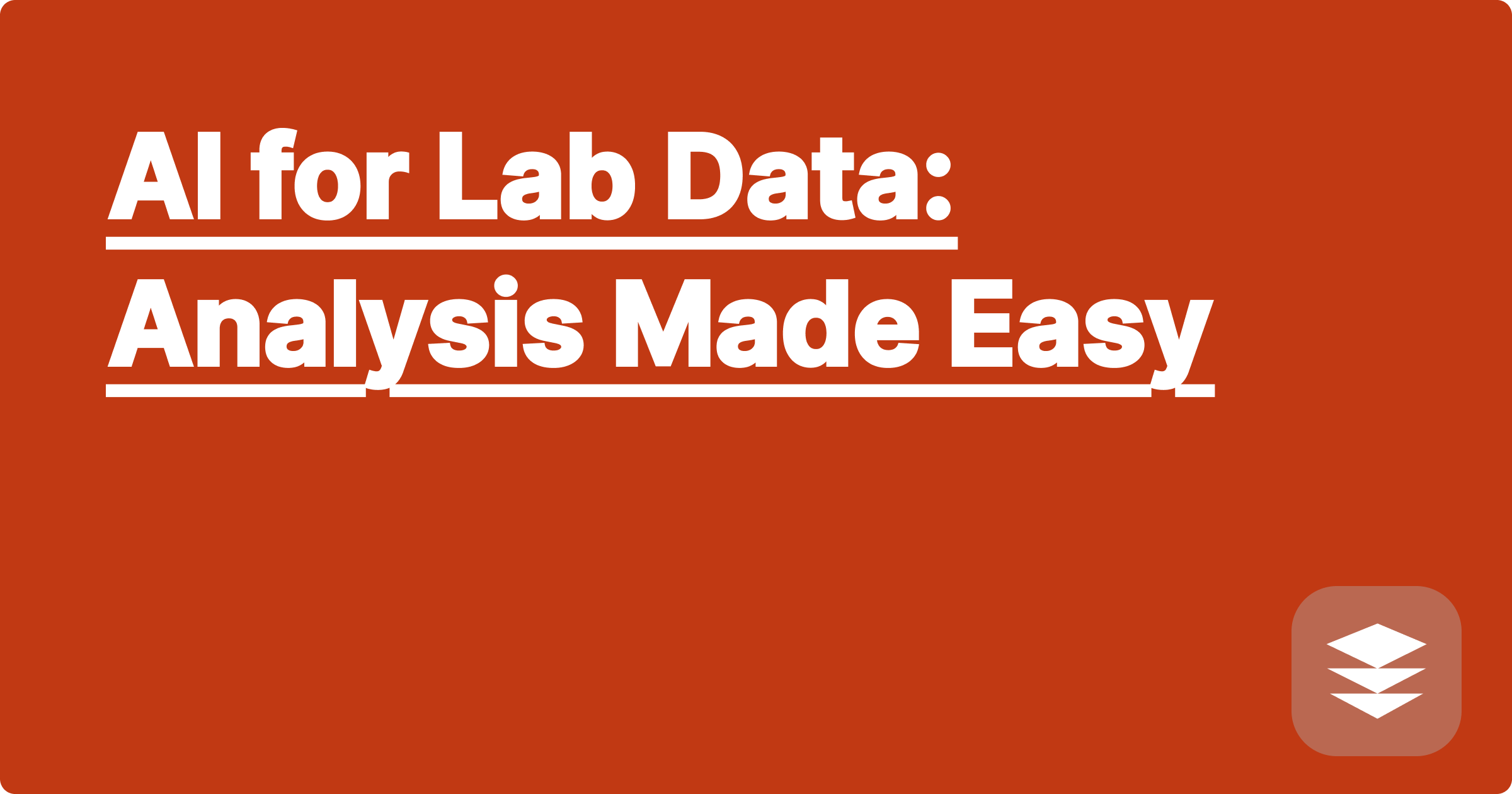
The sheer volume of data generated in modern STEM labs presents a significant challenge for students and researchers. Analyzing this data efficiently and accurately is crucial for extracting meaningful insights and advancing scientific discovery. Artificial intelligence (AI) offers powerful tools to streamline and enhance lab data analysis, freeing up valuable time and resources. This shift towards AI-driven analysis is not just a trend; it's becoming an essential skill for success in today's scientific landscape.
For STEM students and researchers, mastering AI-powered data analysis tools is no longer optional but a necessity. These tools can automate tedious tasks, identify complex patterns, and generate insightful visualizations, enabling researchers to focus on interpretation and hypothesis generation. This empowers students and researchers to accelerate their research, publish findings more quickly, and contribute significantly to their respective fields. Embracing AI in the lab is not about replacing human intellect but augmenting it, leading to more efficient and impactful scientific endeavors.
STEM fields, particularly those involving experimental work, generate massive datasets. These datasets can range from genomic sequences and protein structures to materials properties and sensor readings. Traditional data analysis methods often involve manual processing, complex scripting, and specialized software, which can be time-consuming and prone to errors. Furthermore, extracting meaningful insights from complex, high-dimensional data can be challenging, requiring advanced statistical knowledge and computational skills. The sheer volume and complexity of these datasets can create bottlenecks in research progress, hindering the ability to draw conclusions and advance scientific understanding. This data deluge presents a significant hurdle for both seasoned researchers and students embarking on their scientific journeys.
AI tools like ChatGPT, Claude, and Wolfram Alpha offer innovative solutions to the challenges of lab data analysis. ChatGPT and Claude, for example, can assist with code generation, data cleaning, and even preliminary data interpretation. They can be prompted to write scripts in languages like Python or R, automating repetitive tasks and reducing the burden of manual processing. Wolfram Alpha excels in symbolic computation and data visualization, providing powerful tools for exploring complex datasets and identifying underlying patterns. These AI assistants can be integrated into existing workflows, enhancing efficiency and enabling researchers to focus on higher-level analysis. By leveraging the strengths of these AI tools, researchers can significantly streamline their data analysis pipeline and accelerate the pace of scientific discovery.
Begin by clearly defining your research question and the specific data analysis tasks you need to perform. This could involve anything from data cleaning and preprocessing to statistical analysis and visualization. Next, choose the appropriate AI tool for the task. For example, if you need to generate a script for data cleaning in Python, ChatGPT or Claude would be suitable choices. If you require symbolic computation or advanced visualization, Wolfram Alpha might be a better fit. Once you have selected your tool, formulate a clear and concise prompt outlining the desired outcome. For example, you might ask ChatGPT to "write a Python script to remove outliers from a dataset using the IQR method." Provide the AI tool with the necessary data and any relevant context or constraints. After the AI generates the output, carefully review and validate the results. It's crucial to ensure the output aligns with your expectations and meets the required accuracy standards. Finally, integrate the AI-generated output into your overall data analysis workflow, iterating and refining the process as needed.
Consider a researcher studying the expression levels of specific genes in different cell types. They have a large dataset containing gene expression values for thousands of genes across multiple samples. Using ChatGPT, they could generate a Python script to normalize the gene expression data, perform statistical analysis to identify differentially expressed genes, and create visualizations to compare gene expression patterns across different cell types. The prompt might look like this: "Write a Python script using pandas and scikit-learn to normalize gene expression data, perform a t-test to identify differentially expressed genes between two groups, and generate a heatmap to visualize the results." Alternatively, Wolfram Alpha could be used to perform complex statistical calculations, such as calculating the p-value for a specific statistical test or generating a distribution plot for a given dataset. For example, the query could be: "t-test p-value for two samples with means 10 and 12, standard deviations 2 and 3, and sample sizes 50 and 60."
Effectively integrating AI into your STEM workflow requires a strategic approach. Start by familiarizing yourself with different AI tools and their capabilities. Experiment with various prompts and learn how to refine your queries to obtain the desired results. Don't be afraid to iterate and experiment with different approaches. It's also important to develop a critical mindset when evaluating AI-generated output. Always validate the results and ensure they align with your scientific understanding. Remember that AI tools are meant to augment, not replace, human expertise. Use them strategically to enhance your efficiency and free up time for more complex tasks like interpretation and hypothesis generation. Finally, embrace continuous learning. The field of AI is constantly evolving, so staying up-to-date with the latest advancements and tools is crucial for maximizing your academic success.
To effectively incorporate AI into your lab data analysis, start by exploring the various available tools like ChatGPT, Claude, and Wolfram Alpha. Experiment with different prompts and learn how to refine your queries to achieve optimal results. Develop a critical mindset when evaluating AI-generated output, always validating the results against your scientific understanding. Remember that AI tools are powerful assistants, but the ultimate responsibility for interpretation and analysis rests with the researcher. Embrace these tools as valuable additions to your scientific toolkit and continue to explore their evolving capabilities to stay at the forefront of your field.
Ace STEM Exams: AI Study Planner
STEM Homework Solver: AI Assistance
AI for Lab Data: Analysis Made Easy
Master STEM: AI Exam Prep Guide
AI Coding Tutor: Debug Smarter
AI in Engineering: Boost Your R&D